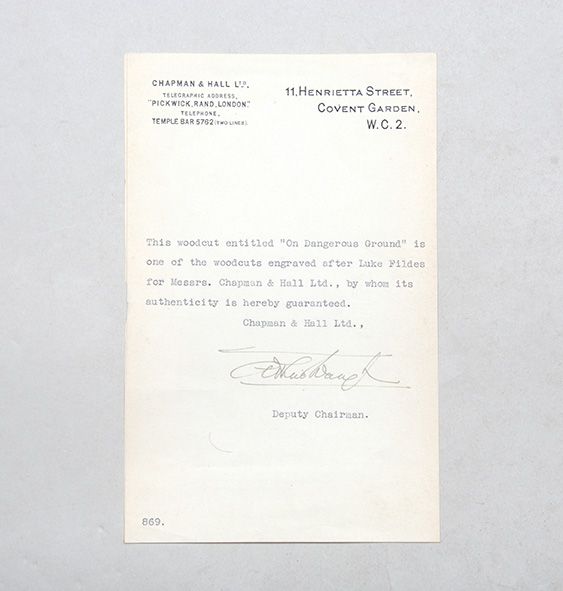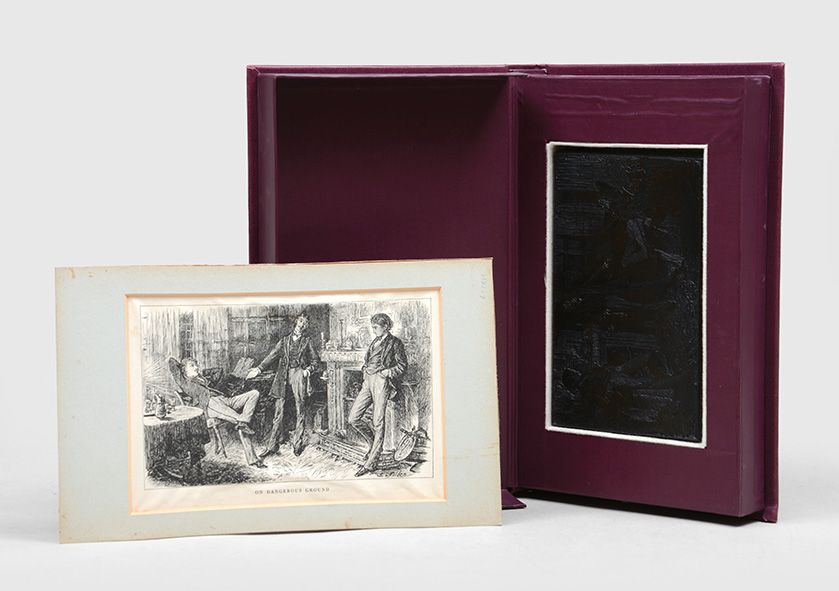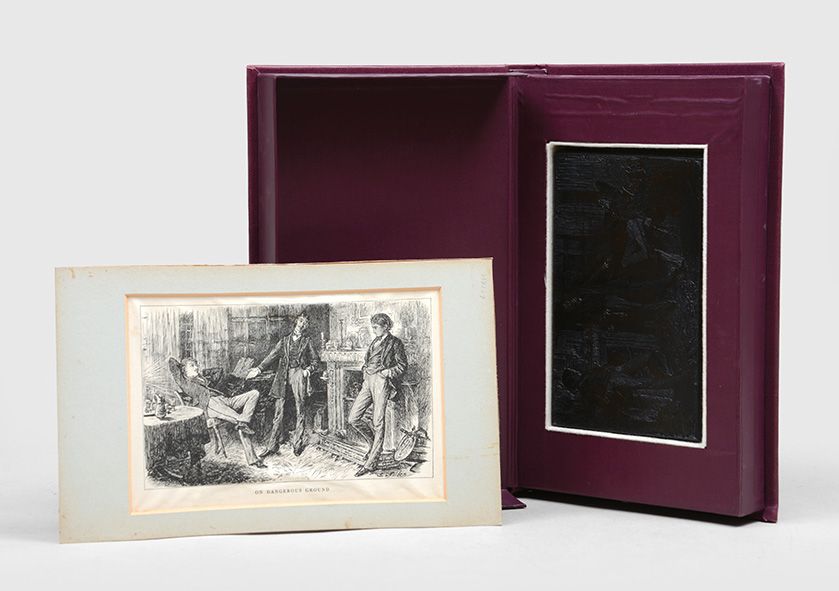The Nonesuch Dickens comprises 27 volumes, including a subscriber’s guide and three volumes of letters. Each set is accompanied by an original printing plate of one of the illustrations used for the first publication. Our set includes the original steel plate used for David Copperfield: “Mr Dick fulfils my aunt’s prediction”.
The Nonesuch Press was one of several deluxe publishers that aspired to the aesthetic standards of the private press movement. Founded in 1922, the Nonesuch Press had a similar aim to William Morris’s Kelmscott Press: to produce artistically designed volumes that demonstrated a care and love for the book, the materials used, and the process of production. But while the Nonesuch Press designed their editions by hand, they printed them on a trade press. This allowed them to bring their volumes to a mass audience and gave them greater commercial success than the small print runs of their arts and crafts predecessors.
The Press’s founder, Francis Meynell, believed that “The readable book is the well-dressed woman. Richness of clothing is not the test, but fitness for the occasion” (A History of the Nonesuch Press, Dreyfus, 1981, p.13). Whereas the Kelmscott Press had produced books thickly forested with ornamental type, woodcut initials and illustrations, Meynell designed his volumes with the experience of the reader uppermost in mind.

Original wood block (and a proof print) “On Dangerous Ground” by Luke Fildes, originally facing page 50 in the first edition of The Mystery of Edwin Drood, together with the certificate of authenticity from Chapman and Hall, signed by Deputy Chairman Arthur Waugh.
With a particular appreciation for the quality of paper, Meynell oversaw the creation of an acid-free variety with a Nonesuch watermark of their insignia, the bear and the castle, here leaving the fore and lower edges uncut for a luxurious feel. The prospectus sent to potential subscribers promised the volumes would be bound in cloth in a “brave array of reds and yellows and blues and browns, an effect that should prove even more charming than the novels themselves”.
The attention to detail taken with this edition would no doubt would have been appreciated by the author. Charles Dickens had been closely involved in the choice of each illustration, and his relationships with his illustrators were crucial to his creativity. Fortunately for Meynell, the plates and blocks from the first editions were still in useable condition, allowing him not only to print from them but also to include an original as a unique addition to each set. With the edition perforce limited to 877 sets, potential subscribers were selected by lot.
As for the text, the Nonesuch Press printed from the last edition which Dickens had revised, and added “every authentic scrap of his writing which has been collected since his death”. If you would like to learn more about collecting Dickens, we recommend that you read our collector’s guide to Charles Dickens first editions.






